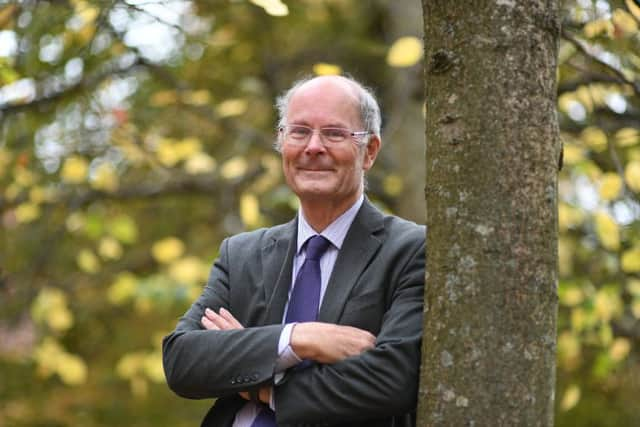Insight: Prof Sir John Curtice on an election too close to call
A high number of marginal seats means the final result of 2019 general election in Scotland is “impossible to call”, the country’s leading pollster has said.
While Boris Johnson remains the clear favourite to enter Downing Street come 13 December, and the SNP looks set to make gains, the division of seats north of the Border will be dependent on “very small movements” of voters switching parties, Professor Sir John Curtice told Scotland on Sunday.
Advertisement
Hide AdAdvertisement
Hide AdMarginals are usually defined as seats where a swing of up to 10 per cent will lead to a change, with the average swing between the Conservatives and Labour in the post-war period around three per cent.


By this standard, around a quarter of seats that will be contested on Thursday across the UK can be classed as marginal. But in Scotland, that figure rises to three-quarters – or 46 out of 59 seats. There are ten constituencies north of the border where MPs are defending majorities of fewer than 270 votes.
“At this point, anyone who is writing about Scotland needs to put their hands up and say: ‘You know what, it’s impossible to call this’,” Curtice said.
“There are so many marginal seats in Scotland that very small movements in either direction – and we could get some contradictory movements in opposite directions – can make a difference to the tally.
“The SNP are clearly ahead, according to the polls we’ve got, and it looks like their vote is going to go up by some degree.
“And it looks like the Tories aren’t going to be far short of where they were in terms of votes at the last election – but what does that mean in terms of seats? It could be the Tories on 12, but it could mean the Tories on eight.
“It’s all about how the cookie crumbles in very marginal seats.”
The race between Labour and SNP is more predictable, however, Curtice suggests.
Advertisement
Hide AdAdvertisement
Hide Ad“Labour’s position does, however, look very weak. They are not able to squeeze the Remain vote in the way they have been able to do so south of the Border, because the SNP have a large chunk of it. SNP gains from Labour certainly seem highly likely.”
SNP candidates defending marginal seats where Labour was the main challenger at the last election have reason to be confident.
With Jeremy Corbyn’s party struggling in the polls in Scotland, places like Glasgow East – where the Nationalists have a majority of just 45 – can be reasonably confident the SNP will hold on.
That’s not the case in seats where the main challengers are the Conservatives or the Lib Dems.
North East Fife, where just two votes separate the SNP and the Liberals, is too close to call. As Curtice notes, many of the academics in the university town of St Andrews “vote for the personality rather than party”.
The pollster added that while Nicola Sturgeon’s party could conceivably pick up two or three seats at the expense of the Conservatives, they could still lose Perth and North Pertshire, where veteran nationalist Pete Wishart has a majority of just 21.
Many pundits have framed this as the “Brexit election”. Constitutional issues are certainly dominant in Scotland, where the SNP’s demand for an indyref2 is added to the mix.
But Curtice cautions those who separate Brexit and independence as motivating factors, insisting that the two issues have instead become heavily intertwined.
Advertisement
Hide AdAdvertisement
Hide Ad“About 50 per cent of those who voted Remain are in favour of independence, while no more than one third of those who voted Leave are in favour of independence,” he added.
“The relationship between these two things has been strengthened and the rise in support for independence has occurred among Remain voters.
“It’s not a question of either/or – because the proportion of voters for who this is a cross-pressure has declined quite markedly.”
And what about the United Kingdom as a whole? When the dust settles on Friday morning, will the Conservatives be looking at a majority for their party across the UK?
“They can be reasonably confident, but they can’t be certain,” said Curtice.
“They have, on average, a 10-point lead in the polls, but there is a variation on that figure – it’s as low as six in some and high as 15 in others.
“Once you get down to a six-point lead there is a 50 per cent chance of a hung parliament.
“The party has also probably hit the high water mark in their ability to squeeze the Brexit Party vote. They are, to some degree, left hoping the Remain vote doesn’t congregate further behind Labour.
Advertisement
Hide AdAdvertisement
Hide Ad“The attempt to influence tactical voting on the Remain side also won’t become clear until polling day – on whether it has been effective.
“The Tories are in pole position. But they’re not so far ahead that if the Labour party does manage to progress, they won’t find themselves in a tighter contest than they are at the moment.”